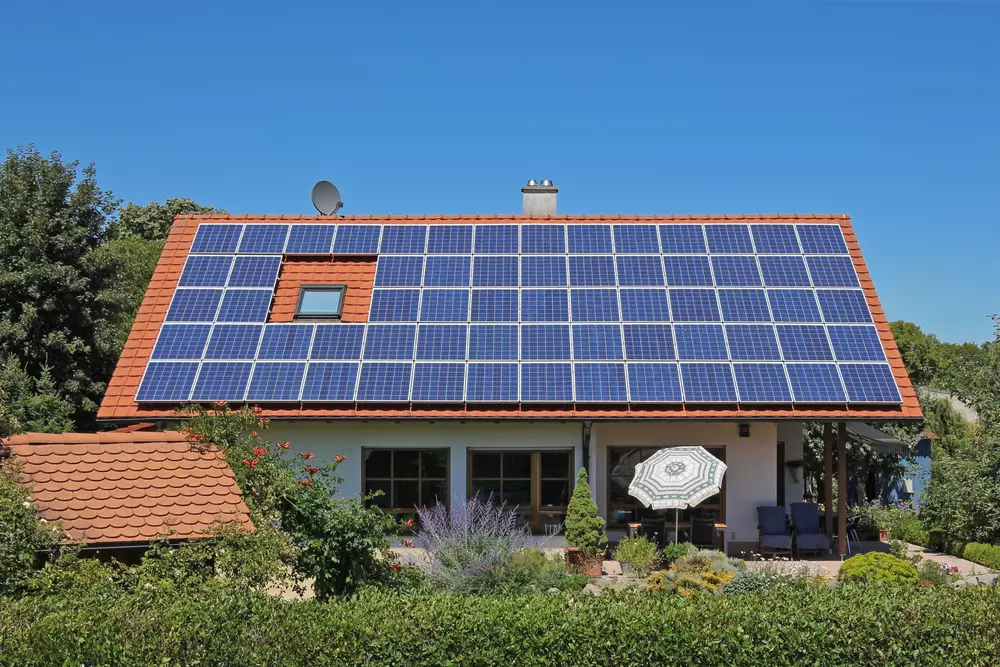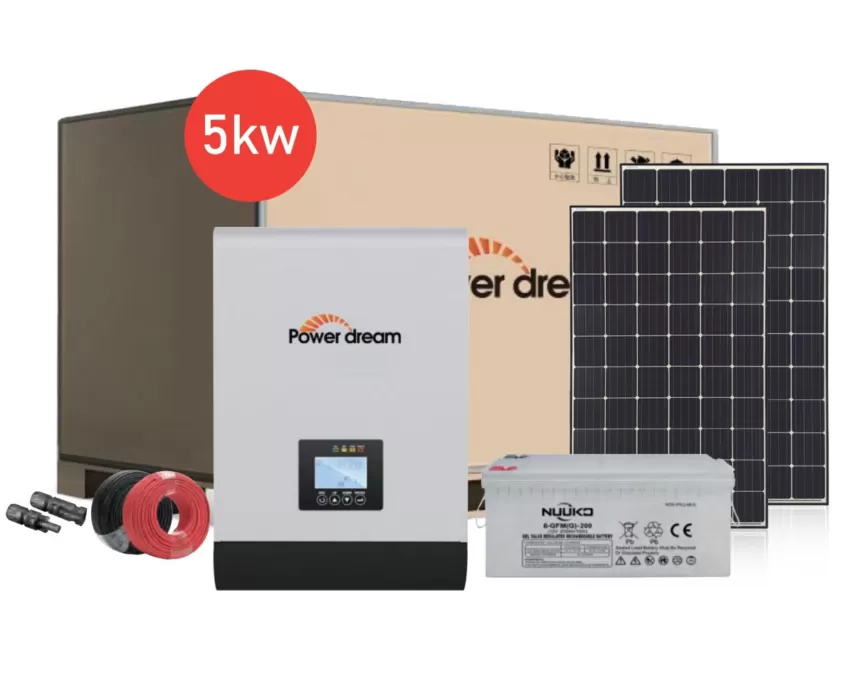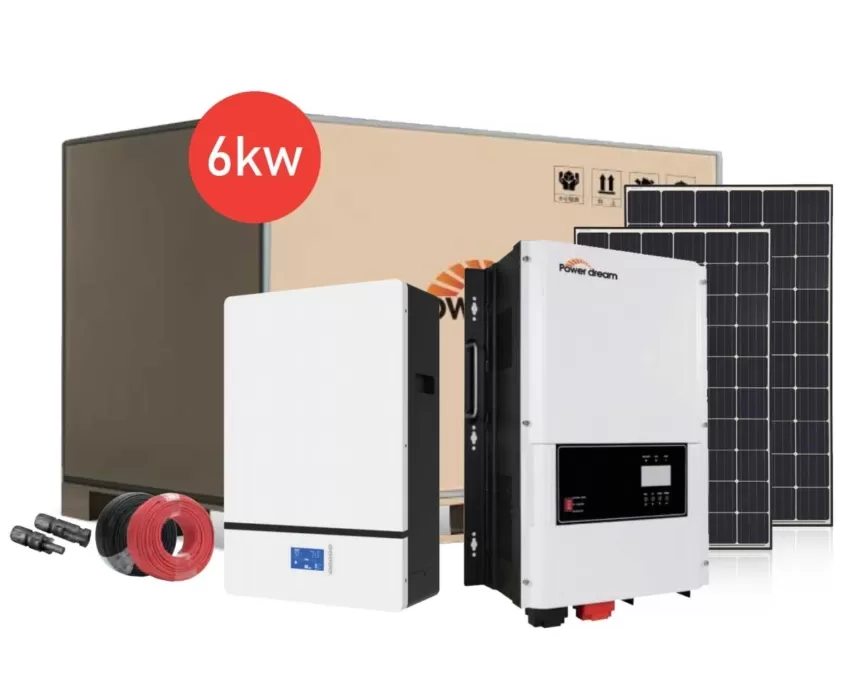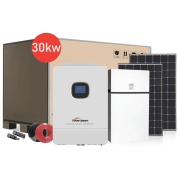How to optimize battery discharge depth in an off grid home solar system?
At its core, an off-grid home solar system relies on battery storage to provide power during periods of low or no sunlight. To maintain battery health and maximize system life, you must learn to manage the battery’s depth of discharge (DoD). Frequent over-discharging of batteries shortens cycle life, while under-utilizing capacity results in expensive storage resources not being fully utilized. Optimizing DoD balances energy availability and battery life to ensure consistent performance in a remote home, cabin, or eco-friendly home. Effective DoD management starts with understanding the home’s energy demand profile, which typically includes daily electricity usage patterns, peak loads (e.g., HVAC, water pumps), and seasonal variations.
In a typical off-grid home solar system, an off-grid solar system with 3 kW to 6 kW of PV capacity can store 10 kWh to 30 kWh of usable energy. Setting a target DoD between 50% and 80% maintains battery health while providing reliable power.
Depth of Discharge and Battery Life in Off Grid Home Solar System
Depth of discharge directly affects the cycle life of batteries in off grid home solar systems. For example, lead-acid batteries can cycle 500-800 times at a 50% depth of discharge, while lithium-ion batteries can cycle 2,000-5,000 times at a similar depth of discharge. Exceeding the recommended depth of discharge (e.g., discharging a lead-acid battery below 20% of the state of charge (SoC)) greatly accelerates sulfation and capacity loss. Conversely, limiting discharge to 30-50% of SoC can extend cycle life but requires a larger battery pack to meet energy demands.
Monitoring depth of discharge (DoD) requires accurately estimating the state of charge through voltage readings, coulomb counting, or a battery management system. A BMS with a reliable SoC algorithm can help maintain DoD within a safe range and dynamically adjust charge/discharge thresholds. By calibrating DoD targets based on local climate conditions, off-grid home solar systems can avoid deep discharges in inclement weather while maximizing available energy storage under optimal conditions.

Optimizing DoD in a 3kW Off Grid Home Solar System
A 3kW off grid home solar system is typically suitable for small loads such as lighting, small appliances, and electronics in a small home or weekend cabin. The battery capacity available for this configuration ranges from 5 kWh. To optimize the discharge time, the following can be done:
Set conservative DoD limits: For lead-acid battery packs, aim for 40–50% DoD to maintain cycle life; for lithium battery packs, 60–70% is feasible.
Load management: Low-power LED lighting and energy-efficient appliances can be installed to smooth out peaks and reduce the depth of discharge per cycle.
Programmable charge controller: An MPPT controller with a programmable SoC cutoff can also configure early cutoff at the DoD limit to prevent excessive discharge.
Backup generation: Integrate a small or solar generator as a fault protection device. Automatic start-up during low battery SoC prevents deep discharge, thereby maintaining the health of the off-grid home solar system.
Seasonal Adjustment: Lower the target DoD to 30-40% in the winter to account for reduced solar generation and prevent over-consumption during cloudy days.
Fine-tune DoD in a 5kW System
A 5 kW off grid home solar system can serve a suburban or rural home with moderate loads such as refrigeration, power tools, water heaters, and HVAC systems. The battery typically provides 5-10 kWh of energy storage in this case. To optimize discharge time, do the following:
Tiered DoD Strategy: Implement diurnal DoD thresholds: This can be 70% in the summer and 50% in the winter to accommodate solar variations.
Diversify Storage: Pair a lead-acid battery bank with a lithium battery buffer. Using a lithium battery bank in high-depth-of-discharge situations can extend the life of the lead-acid battery.
Smart Inverter and BMS Integration: Inverters with built-in BMS communication capabilities can also be used. Real-time SoC data allows the system to limit non-essential loads when approaching DoD limits.
Load Prioritization: Categorize circuits. When the battery reaches 60% charge, the system cuts off non-critical loads, thus maintaining critical operations and preventing deep discharge.
Predictive maintenance: Analyze historical DoD trends using data logging. If the system is frequently below the target SoD, adjust the operating strategy.

Managing DoD in a 6kW off grid solar system
The 6kW off grid solar system suits small and medium-sized homes with high energy demand. The available capacity of such battery banks is 10- 15 kWh. Key optimization measures include:
High-performance lithium-ion batteries: Considering high-load cycles, invest in LiFePO₄ or NMC chemistries with a recommended dose of 80%, providing more than 3,000 cycles.
Energy Management System (EMS): An integrated EMS that coordinates solar production, battery scheduling, and generator backup optimizes DoD in real time.
Planned load shifting: Use smart timers to run high-energy-consuming appliances during peak solar production to minimize battery discharge.
Redundant safety cutoffs: Set multiple SoC thresholds, such as an 80% discharge depth alarm and a 90% critical cutoff. When critical limits are approached, the generator is triggered to start automatically.
In an extensive 6kW off-grid home solar system, these measures enable safe deep cycling of the battery without sacrificing reliability or accelerating wear, ensuring continuous power even under strong seasonal demand.

Optimizing the system with some practical tips
In addition to system-specific strategies, there are some practical tips that can improve the optimization of the size of all off grid home solar systems. You can maintain the battery temperature between 18–25°C to maximize available capacity and ensure consistent DoD performance. Meanwhile, technicians regularly perform discharge tests to verify battery capacity and recalibrate the SoC algorithm for accurate DoD measurement. Beyond this, battery packs can be designed with scalable capacity. Adding parallel modules can maintain conservative DoD targets even as load increases. Engineers or operators can leverage IoT-enabled BMS platforms to remotely alert to battery imbalance, voltage drift, or temperature spikes and prevent accidental deep discharge.
Balancing performance and longevity
Optimizing battery discharge depth in off-grid home solar systems is a multifaceted task that requires integrating accurate discharge depth monitoring, and we provide targeted energy management strategies for 3 kW, 5 kW, and 6 kW off-grid solar systems commonly chosen by small residential users. By setting appropriate discharge depth thresholds, configuring smart charge controllers and BMS, and implementing load transfer and environmental controls, homeowners can maximize available energy without affecting battery life.







